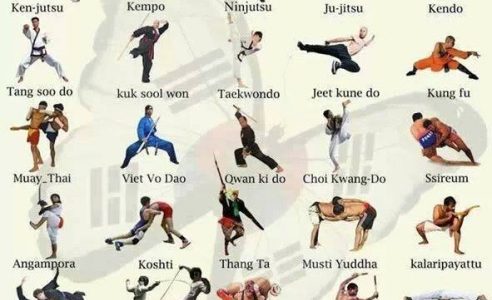Unveiling The Range Of Martial Arts Disciplines: An Overview From Karate To Taekwondo
Unveiling The Range Of Martial Arts Disciplines: An Overview From Karate To Taekwondo
Blog Article
Write- simply click the up coming internet site Developed By-Faber Bondesen
Are you tired of feeling bewildered by the vast globe of martial arts? With many styles to pick from, it can be easy to get lost in a sea of punches, kicks, and strange names. But worry not!
This conversation will certainly demystify the different martial arts styles, taking you on a trip from the effective strikes of Karate to the vibrant kicks of Taekwondo. Get ready to discover the beginnings, strategies, and viewpoints behind these old art kinds.
So, tighten your belt and prepare to embark on an enlightening exploration right into the exciting globe of martial arts.
Origins of Martial Arts Styles
The beginnings of martial arts styles can be traced back to old worlds and their need for protection and combat strategies. Throughout background, various societies established their own unique techniques of combating, each with its own collection of methods and approaches.
In China, for instance, martial arts styles such as Kung Fu and Tai Chi were developed as a means of protection and boosting physical and psychological wellness.
In Japan, the samurai warriors created styles like Martial arts and Judo, focusing on technique, precision, and proficiency of the body.
Likewise, in Korea, Taekwondo emerged as a martial art stressing high kicks, fast movements, and psychological fortitude.
These very early people laid the structure for the diverse variety of martial arts designs that exist today, each with its very own rich history and social significance.
Methods and Educating Approaches
To master fighting styles designs, specialists need to discover numerous techniques and training methods.
https://martialartsclassesfor4yea98776.elbloglibre.com/32420834/the-psychological-advantages-of-taekwondo-enhancing-confidence-and are the specific activities and actions made use of in combat, such as punches, kicks, tosses, and obstructs. Various martial arts designs have their own one-of-a-kind set of methods that experts should grasp through rigorous training.
Training techniques differ depending on the style, yet they normally involve a mix of physical conditioning, drills, sparring, and forms.
Physical fitness is important to develop toughness, adaptability, and endurance. Drills assist practitioners refine their strategies and boost their rate and accuracy.
Sparring allows practitioners to exercise their strategies in a regulated, reasonable environment. Forms, also known as kata, are cut-and-dried series of activities that assist experts establish muscle mass memory and focus.
Approaches and Principles
Checking out the philosophies and concepts of fighting styles styles can provide you with a much deeper understanding of your chosen discipline. Each fighting style has its own special approach and collection of leading concepts that form the method it's exercised.
For instance, Martial arts stresses self-control, respect, and self-control. It educates experts to concentrate their minds and bodies, allowing them to safeguard themselves while preserving a feeling of internal tranquility.
On the other hand, Taekwondo positions a solid focus on rate, agility, and adaptability. Its principles are rooted in the tenets of politeness, integrity, perseverance, self-discipline, and indomitable spirit.
Verdict
Now that you have actually explored the origins, strategies, and philosophies of numerous fighting styles designs, you have a deeper understanding of these ancient self-controls.
Visualize a young karate student, practicing with unwavering resolution and emphasis, appearing boards with an effective punch.
Their journey showcases the dedication and toughness required to understand a martial art, reminding us that with technique and perseverance, anything is possible.
